Are you curious about Manipur Imphal Tourism and whether it’s worth your travel time? Absolutely! This vibrant city offers a unique blend of culture, history, and natural beauty, making it a must-visit destination in Northeast India. SIXT.VN can help you plan your trip with ease, offering services like airport transfers, hotel bookings, and guided tours. Explore Manipur’s rich heritage, stunning landscapes, and warm hospitality with SIXT.VN. Discover serene lakes, ancient temples, and bustling markets with professional guidance and support.
1. What Makes Ima Market in Imphal Unique?
Ima Market, also known as Ima Keithel, is unique because it’s an all-women’s market where approximately 5,000 local women sell a variety of goods, maintaining a tradition that dates back to the 16th century. It is a symbol of women empowerment. Amidst the bustling city, Ima Market, also known as Ima Keithel, is a vibrant hub that offers a unique shopping experience for both locals and tourists alike. Vendors sell everything from groceries and clothes to fruits, toys, spices, and utensils. However, what sets this market apart is its extraordinary nature: it is entirely run by women. Approximately 5,000 local women, dressed in traditional phaneks, innaphis, and sarees, set up their shops and stalls every morning, creating a welcoming atmosphere for a substantial number of shoppers. These women manage all the activities within the three shopping complexes of the Ima Market, which are spread across both sides of the road, along with hundreds of informal vendors in the outside street and under the flyover. This market holds a unique and significant place in the history of Manipur.
The history of Ima Market dates back to the 16th century when a forced labor system known as Lallup System required male members of the Meitei community to work in distant lands or serve in the army. Consequently, the women had to manage their households on their own. They supported their families by cultivating fields, weaving textiles, and selling their products in local markets.
Today, Manipur continues to face challenges in terms of education, local industries, and youth employment. Many young people leave the state in search of educational or job opportunities, leaving women with limited options but to work to meet their daily expenses. As a result, the tradition of Ima Market has thrived over the years.
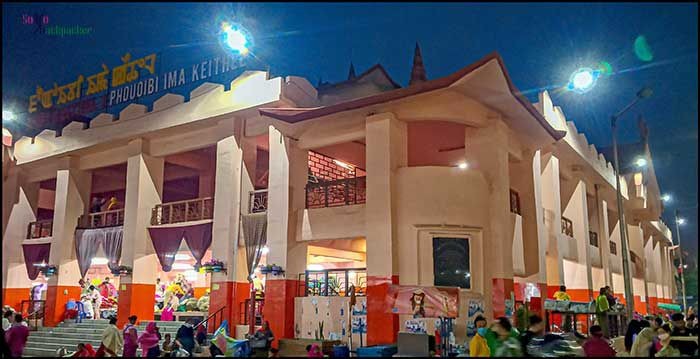 Ima Market in Imphal
Ima Market in Imphal
Ima Market in Imphal
The market adheres to a tradition of allowing only women who have been married at least once, including divorced and widowed women, to set up stalls. They are referred to as Ima, meaning “Mother.” These women are ordinary individuals who accomplish extraordinary feats.
Ima Market can be seen as a remarkable symbol of Women Empowerment, not only in Manipur but across India. Despite the fact that the shopkeepers strive to earn a living by selling goods, often at low prices, they work hard to sustain their lives. This embodies the essence of Women Empowerment: their resilience and determination to manage their lives.
Beyond being a shopping destination, Ima Market also represents a strong socio-political institution in Manipur’s history. Manipuri women have played extraordinary roles in the course of Manipuri history. They bravely resisted the British Force in 1904 when men from Imphal were ordered to carry wood and bamboo from Kabow Valley in Burma to rebuild Major Maxwell’s residence after the forced labor system was reintroduced. The women marched in large numbers, refusing to move until the order was retracted, an event known as the first Nupi Lan (Women’s War).
The second Nupi Lan in 1939 was triggered by the policy of exporting rice during a famine. Again, women protested, demanding a ban on rice exports and the closure of rice mills. They stood unarmed but strong against the military until the movement ended with the outbreak of World War I. The Nupi Lan Memorial Complex in Imphal pays tribute to these courageous women.
 Shops in Ima Market
Shops in Ima Market
Shops in Ima Market
Throughout history, Manipuri women have bravely led protests, such as the Meira Paibi movement against drug abuse and alcoholism in the 1970s, and the 12 women who stood nude in front of Kangla Fort in 2004 to protest against the Armed Forces (Special Powers) Act (AFSPA). Many of these women are connected with Ima Market, where they share bonds, exchange ideas, discuss social norms, and shape strong protests while maintaining financial freedom.
2. Why Should I Visit Kangla Fort?
Kangla Fort is a must-visit because it’s a historical site that was the traditional seat of the past Meitei rulers of Manipur, offering a glimpse into the state’s rich political and religious legacy. The fort spans 237 acres and has been a silent witness to many pivotal events in Manipur’s history. Dating back to the 15th century, it served as the traditional seat of the Meitei rulers. Over the years, the fort underwent various phases of demolitions and reconstructions by different entities, including Meitei Rulers, Burmese, British, Indian Armed Forces, and the Government of Manipur.
After the Anglo-Manipur War, the British forces occupied the fort in 1891. Following India’s independence in 1947, the Assam Rifles took over the occupation. This occupation by the Assam Rifles became a significant point of contention for the local people. The fort was believed to be a major interrogation center where locals were detained under the controversial AFSPA. Since the introduction of AFSPA in the 1980s, there have been numerous demands from the local community to repeal the act, which grants immense power to the armed forces to shoot, arrest, and search individuals in the name of maintaining public order. This act allows the army to shoot to kill, enter and search without a warrant, and destroy property.
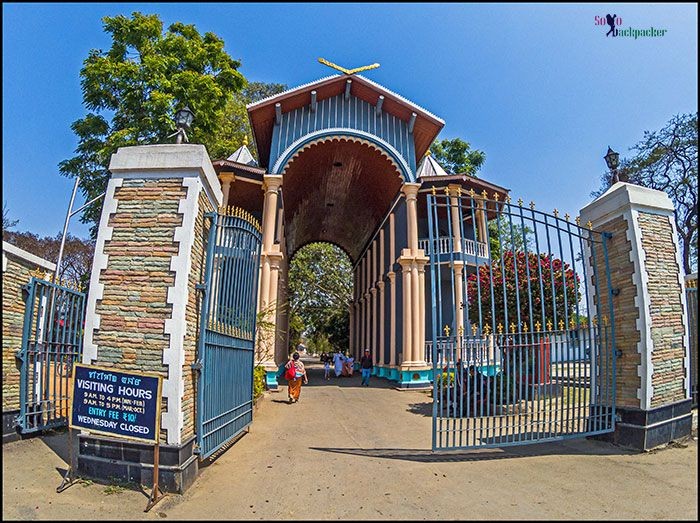 Entrance of Kangla Fort
Entrance of Kangla Fort
Entrance of Kangla Fort
Numerous protests were organized in Imphal to repeal the draconian act, but without success. The protestors also demanded the relocation of the Assam Rifles Headquarters from Kangra Fort. Finally, after many demonstrations, the fort was handed over to the Government of Manipur in November 2004.
Today, Kangla Fort has been developed into a prominent tourist attraction in Imphal. It holds a rich legacy of political and religious importance in Manipur. The main attractions within the fort include the ruins of the ancient citadel, a glass house showcasing royal boats, the Sanamahi Temple (dedicated to Lainingthou Sanamahi, the ancient deity of the Meitei), two giant statues of Kangla Sha (a mythological creature that is half-lion and half-dragon on the state Emblem of Manipur), the original Govindaji Temple, the Kangla Museum, and a British-styled bungalow. Although the original temple of Govindaji is damaged and no longer in worship, the remnants of its grand pillars hint at its ancient glory.
 Ruins of Govindaji Temple
Ruins of Govindaji Temple
Ruins of Govindaji Temple
The complex boasts lush green gardens, colorful orchids, a rose garden, blossoming cherry trees, and other beautiful trees. The fort is surrounded by a moat (water canal) on three sides and the Imphal River on the fourth side. Several water bodies are also present within the premises of Kangla Fort. Given the fort’s vast area, exploring it can be tiring. Renting a bicycle or hiring a golf cart from the entrance is recommended for a comfortable visit.
3. What is the Significance of the World War II Cemeteries in Imphal?
The World War II Cemeteries in Imphal are significant because they serve as a reminder of the pivotal role this region played during the war and honor the soldiers who lost their lives, representing a crucial part of global history. During World War II, the remote regions of Nagaland and Manipur became central to world politics. This area became a cosmopolitan hub with soldiers from India, Africa, the USA, Britain, China, Japan, and Burma. The battlefields of Kohima and Imphal witnessed a remarkable war between the Japanese Forces (supported by the Indian National Army) and the Allied Forces, making North East India an important theater of World War II.
The memories of World War II are scattered throughout the North Eastern States in the form of remote airfields, memorials, and well-maintained cemeteries. Imphal houses two significant cemeteries from the World War II era, both maintained by the Commonwealth War Graves Commission. The Indian Army War Cemetery contains the graves of soldiers from Undivided India and a few African soldiers, while the Imphal War Cemetery contains the graves of British, American, and Indian soldiers from the British Army Division.
The Imphal War Cemetery is located near the main Kohima-Imphal road, opposite DM College of Science. It was established during the war, with over 500 graves by 1945. It serves as the final resting place for more than 1,600 soldiers from the Allied Forces, with approximately 140 remaining unidentified.
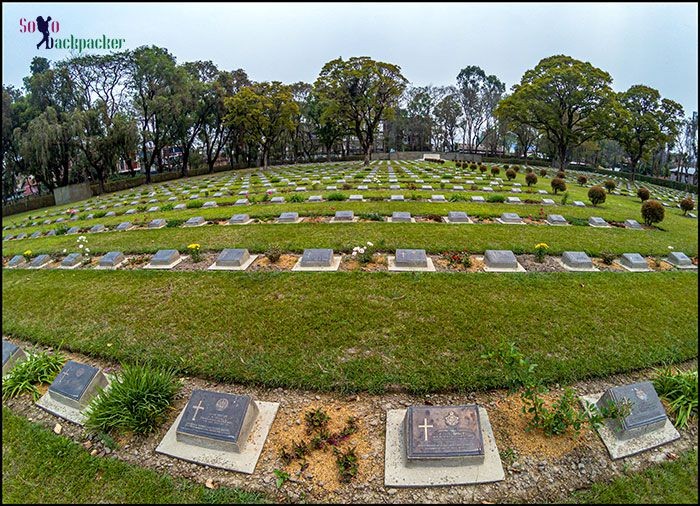 Imphal War Cemetery
Imphal War Cemetery
Imphal War Cemetery
Each grave is marked with a stone plaque bearing final messages from family members. One plaque reads, “Rest in peace Darling till we meet again.” The grave of H.V. Turner, posthumously awarded the Victoria Cross, reads, “Well Done, Good and Faithful Servant. Ever Remembered.” Unidentified graves are equally marked with dignity, one plaque stating, “A Soldier of the 1939-1945 War. Known unto God.” The cemetery includes a memorial known as The Cross of Sacrifice, a small pool behind the memorial, and a Stone of Remembrance.
The Indian Army War Cemetery is located near Hafiz Hatta Masjid, across the Imphal River. Approaching from the Kohima-Imphal road, the main entrance is through a narrow alley between houses. The cemetery is a green complex inside a walled enclosure with trees and a memorial. Burials and cremations were conducted here during the war.
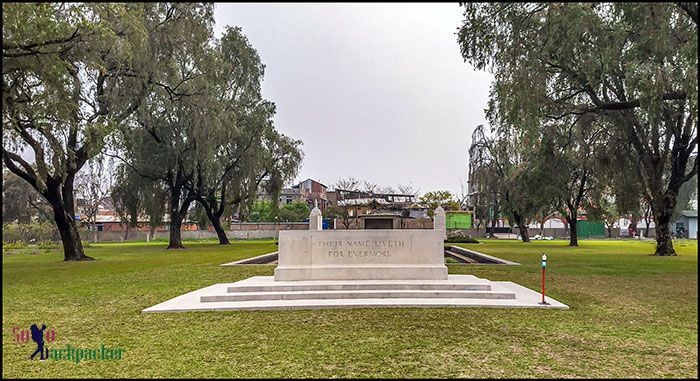 Indian Army War Cemetery
Indian Army War Cemetery
Indian Army War Cemetery
By 1945, over 300 men were buried there, and by 1947, the remains of more than 500 others were brought from smaller sites in the area. The cemetery includes the Imphal Cremation Memorial, commemorating nearly 870 Buddhist, Hindu, and Sikh servicemen. It also has a Stone of Remembrance and a pool behind the stone. The grave of Jemadar Abdul Hafiz, posthumously awarded the Victoria Cross, is marked here. The graves of unidentified soldiers read, “A Soldier of the Indian Army 1939-1945 is honoured here.”
4. What Can I Expect at Cheirao Ching Eco-Tourism Picnic Spot?
At Cheirao Ching Eco-Tourism Picnic Spot, expect breathtaking panoramic views of Imphal valley, modern amenities, and a refreshing hiking experience, making it a perfect spot for both day and night visits. Cheirao Ching offers a 360-degree panorama of Imphal city and its surroundings, including the Legislative Assembly Building. A 40-45 minute hike from the ground to the hilltop can be tiring on a hot and humid day, but the view from the top is absolutely breathtaking, especially in the evening. The tourist trail is being expanded towards the adjacent hilltop as well. It’s a must-visit attraction to enjoy the spectacular night views of Imphal city.
5. What is Special About Shri Govindaji Temple?
Shri Govindaji Temple is special because it’s the largest Vaishnava temple in Imphal, known for its beautiful architecture, serene atmosphere, and the traditional Manipuri style prayers, making it a spiritual and cultural highlight. The temple is located next to the palace of the former rulers of the Manipur Kingdom, within walking distance of Kangla Fort and Ima Market. It features open spaces and a huge prayer hall. Every day around 11 AM, Bhojan Prasad is offered in traditional Manipuri style. The main idol installed is Radha Krishna in the middle, Krishna Balram on the left, and Lord Jagannath, Balabhadra, and Subhadra on the right.
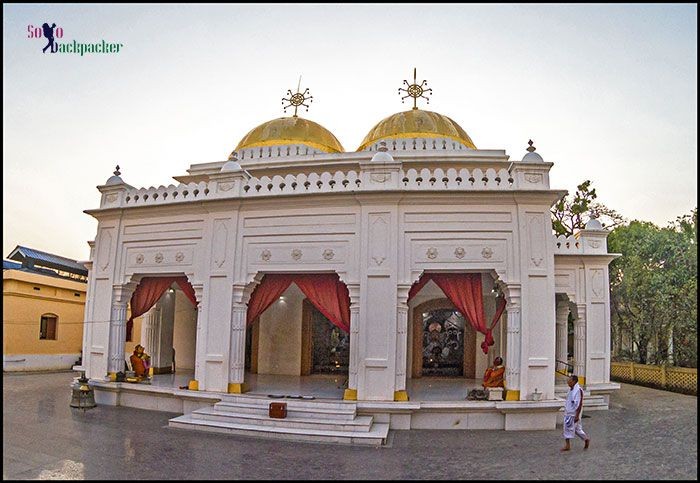 Shri Govindaji Temple
Shri Govindaji Temple
Shri Govindaji Temple
The Sandhya Aarti (Evening Prayer) is a beautiful ceremony that features a soothing Aarti prayer with local musical instruments in traditional Manipuri style. A strict dress code is observed for the devotees.
6. What Makes ISKCON Temple in Imphal a Must-See?
The ISKCON Temple in Imphal is a must-see due to its architectural beauty, divine aartis, and the opportunity to witness Manipuri wedding ceremonies, offering a blend of spiritual and cultural experiences. While moving from the airport to the city, a sign-board indicating ISKCON Temple was visible within walking distance. The temple is an architectural beauty and looks magnificent during the sunset. The dome-shaped ceiling of the main prayer hall is adorned with glimpses of Shri Krishna’s life.
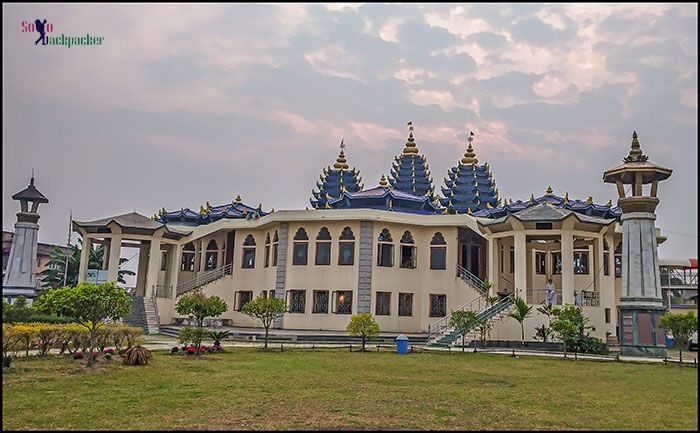 ISKCON Temple in Imphal
ISKCON Temple in Imphal
ISKCON Temple in Imphal
Morning and Evening Aarti are said to be divine. A restaurant named ‘Govinda’ offers delicious Manipuri Thalis during the day. The temple can also be used for private ceremonies such as family rituals, mundan, and marriages. A lush green garden lawn in front of the temple is being developed.
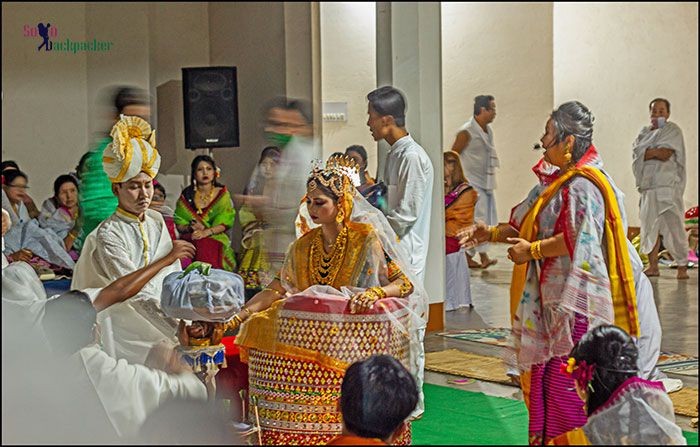 Manipuri Wedding Ceremony
Manipuri Wedding Ceremony
Manipuri Wedding Ceremony
There, one can attend a Manipuri wedding at the ISKCON Temple. The wedding ceremony is known as Luhongba. The groom dresses in white dhoti, kurta, and a white turban with golden borders, while the bride is wrapped in a beautiful embroidered skirt (Potloi) and ornaments. They sit around a Tulsi plant, where a priest chants mantras.
7. What Can You Learn at the Imphal Peace Museum?
At the Imphal Peace Museum, you can learn about the Battle of Imphal during World War II, view war artifacts, and explore the arts and culture of Manipur, providing a comprehensive understanding of the region’s history and heritage. The museum is developed at the foothill of Red Hill, 20 km Southwest of Imphal, with support from the Nippon Foundation (TNF), Manipur Tourism Forum, and Manipur Government in 2019. The Red Hill area was the epicenter of a fierce battle during World War II.
 Imphal Peace Museum
Imphal Peace Museum
Imphal Peace Museum
The museum displays a timeline of the Battle of Imphal, names of casualties, war artifacts such as artillery shells, soldiers’ personal notes, photographs, maps of the battle, and army uniforms. Another section displays the arts and cultural life of Manipur through photographs and models. The museum features a large assembly hall with pictures of people from different communities in Manipur in their native dress. A calligraphy with characters for “heiwa” (peace), written by Japanese Prime Minister Shinzo Abe, is also displayed.
8. What is Unique About the Street of Momo Vendors in Imphal?
The Street of Momo Vendors in Imphal is unique because it offers a local culinary experience where you can witness families preparing and selling homemade momos, providing a glimpse into the authentic flavors of the region. While moving around the city in the evening, a street near Manipur University of Culture in Angom Colony area features many vendors selling homemade momos. Local families set up these momo stalls every evening. They roll flour, fill ingredients, and prepare momos on the street.
 Momo Street in Imphal
Momo Street in Imphal
Momo Street in Imphal
9. What Can You Experience at Sadu Chiru Waterfall?
At Sadu Chiru Waterfall, you can experience a refreshing natural retreat with a scenic waterfall, lush green surroundings, and the chance to try local homemade beers, offering a unique blend of natural beauty and local culture. It is a beautiful waterfall on the outskirts of Imphal city, a detour from the Loktak Lake road, approximately 20 km from the airport and 28 km from the youth hostel. The road is in good condition, passing through small villages and paddy fields before ascending through the hilly terrain. The waterfall can be reached via a 500 m trail of stone steps. The surrounding hills are covered with lush green forest. It is a pleasant place to take a bath and enjoy the cool plunge of the waterfall.
 Sadu Chiru Waterfall
Sadu Chiru Waterfall
Sadu Chiru Waterfall
While returning from the waterfall, some locals sell liquid items in colorful bottles, claiming they are local juices in different flavors like mango and strawberry, though the powerful scent of fermentation indicates they are country-made beers. If you visit Sadu Chiru Waterfall, you may get a chance to try these country-made beers. Local tribal women also sell these drinks, green vegetables, and dry fish at makeshift stalls along the Village Road.
10. What Activities Are Available at Waroi Garden Picnic Spot?
Waroi Garden Picnic Spot offers activities such as boating on a man-made lake, kids’ play area, dining at a restaurant, and the option to cook your own meals in the open area, making it a popular place for photoshoots and relaxation. It’s a well-maintained picnic place with a nice ambiance, very popular among locals. A small man-made lake offers boating, and there is a kids playing area. A restaurant is there to enjoy meals. One can rent utensils and buy groceries to cook in the open area. The garden is a popular place for photoshoots.
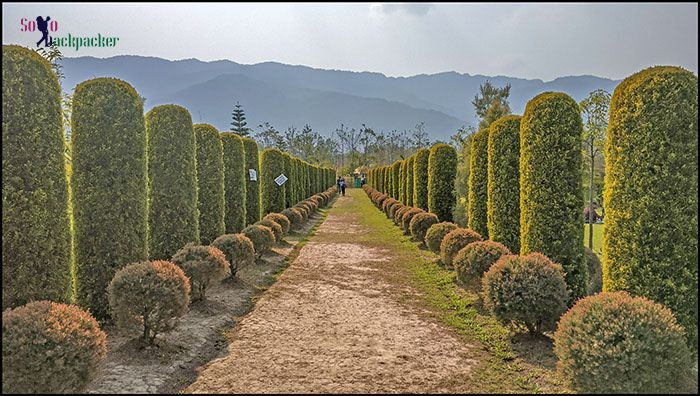 Waroi Garden Picnic Spot
Waroi Garden Picnic Spot
Waroi Garden Picnic Spot
11. What Can You See at the Strawberry Farms Near Imphal?
At the Strawberry Farms near Imphal, you can see strawberry plantations and learn about the growing process, especially between September and November, providing an interesting agricultural experience. It is located near Nambol Bazaar, a 4-5 km detour from the road to Sadu Chiru. One can visit Strawberry plantations. The Strawberry plantation process starts in September, with the fruit ready for harvest by mid-November.
 Strawberry Farm
Strawberry Farm
Strawberry Farm
Imphal also boasts the oldest Polo Ground (Mapal Kangjeibung) in the world. Polo originated in Manipur and was popularized by the British. Moirang, just 45 km from Imphal, offers the beauty of Loktak Lake, the brow-antlered deer or the dancing deer (Sangai Deer) in the natural habitat at Keibul Lamjao National Park, and the INA Museum.
12. How Can I Reach Imphal?
You can reach Imphal by road or air, as Manipur does not have a railway line. Imphal International Airport is well-connected to major Indian cities, and the road network, though primarily hilly, offers scenic routes.
Road Connectivity to Imphal
For many years, the National Highway from Dimapur to Imphal via Kohima (NH 39) was the only lifeline to Manipur. The state’s over-dependence on it was exploited by insurgents through extortions and bandhs. The highway passes through Naga tribal districts, and regional conflicts often led to prolonged bandhs, starving the Imphal valley of essential supplies.
During the first trip, I traveled on the Imphal-Jiribam-Silchar route and found it in improved condition. The route is regularly patrolled by security forces, and though it passes through a hostile area, there are several security checkpoints. The old bridge at Barak River is not in great shape, but construction work is underway for a new one. The road between Jiribam and Silchar is well-paved. Shared vehicles (Sumo, Cruiser etc) are available between Silchar and Imphal via Jiribam.
On the second trip, I traveled on NH 39 (now part of Asian Highway, AH1) from Imphal to Dimapur via Kohima. Except for a few kilometers between Dimapur and Kohima and between Kohima and Mao Gate, the road is in perfect condition. A well-maintained highway is available after entering Manipur through Mao Gate, offering a smooth ride to Imphal. Shared vehicles (Sumo, Force Traveler, Buses etc) are available between Dimapur and Imphal via Kohima.
Air Connectivity to Imphal
Imphal International Airport is connected to major cities in India (Delhi, Kolkata, Bengaluru, Mumbai etc) by daily flights. A flight between Imphal and Mandalay in Myanmar was available but has been terminated. The airport was constructed during the World War II era and known as Tulihal Airstrip. It served as a major supply link for the allied forces fighting the Japanese forces during the seizure of Imphal. Later, Tulihal Airstrip developed as a major airport in North East India, becoming the present-day Imphal International Airport. As the only airport in Manipur, it is an important link to India’s Look East Policy.
When arriving at Imphal Airport, the flight from Kolkata to Imphal offers a spectacular vista of Loktak Lake during the landing approach. The terminal building has green-colored triangular small domes peeping out from the roof. The airport is surrounded by hilly terrain. During the rainy season, the clouds descend in the valley, making the surroundings beautiful.
The airport is connected to the city center of Imphal by a well-connected highway, and the city has expanded up to the airport. Malom Bus Stand is on the outskirts of the airport, where 10 people were killed by soldiers of Assam Rifles in a fake encounter. The incident, known as the “Malom Massacre,” prompted Irom Sharmila to start her hunger strike against the controversial AFSPA rule. Now, the airport is connected to Imphal city center, and you can easily get city buses, auto-rickshaws, and other vehicles to travel around without any security issue.
13. What Public Transport Options Are Available in Imphal?
Imphal offers an efficient public transport network with public buses and shared autos. Shared autos are common in the city area, while buses are used to commute between districts.
14. What Are the Accommodation Options in Imphal?
Imphal has hotels, guest houses, and home-stays. Budget hotels are located near the starting point of Kohima road (Khuman Lumpak and around) and in Jiri Parking area near Ima Market. The Youth Hostel near Khuman Lumpak Stadium offers decent rates with basic amenities like hot water and mosquito nets. Simple veg and non-veg meals are also available at reasonable rates.
FAQ: Frequently Asked Questions about Manipur Imphal Tourism
Q1: What is the best time to visit Imphal?
The best time to visit Imphal is during the winter months (October to March) when the weather is pleasant and ideal for sightseeing.
Q2: Are there any cultural festivals in Imphal that I should know about?
Yes, Imphal celebrates several festivals, including Yaoshang (Holi), Ningol Chakouba, and Kang (Rath Yatra), which offer a glimpse into the local culture.
Q3: Is it safe to travel to Imphal?
Imphal is generally safe for tourists. However, it’s advisable to stay updated on the current situation and follow local guidelines.
Q4: What are the must-try local dishes in Imphal?
Must-try dishes include Eromba, Singju, and Chamthong or Kangshum, offering a taste of Manipuri cuisine.
Q5: Can SIXT.VN help with arranging transportation within Imphal?
Yes, SIXT.VN offers transportation services, including airport transfers and car rentals, to help you get around Imphal easily.
Q6: Are there any adventure activities available in Imphal?
Yes, you can enjoy trekking and exploring the natural landscapes around Imphal, providing an adventurous experience.
Q7: What should I pack for a trip to Imphal?
Pack light clothing for the day and warm layers for the evenings, comfortable walking shoes, and insect repellent.
Q8: How can I book a hotel in Imphal through SIXT.VN?
You can easily book a hotel in Imphal through the SIXT.VN website or app, choosing from a range of options to suit your budget and preferences.
Q9: What are the visa requirements for visiting Imphal as a foreign tourist?
Foreign tourists require an Indian visa to visit Imphal. Ensure your visa is valid and covers the duration of your stay.
Q10: Does SIXT.VN offer tour packages for exploring Manipur?
Yes, SIXT.VN offers customized tour packages for exploring Manipur, including visits to key attractions and cultural sites.
Ready to explore the enchanting city of Imphal? Let SIXT.VN be your guide to a seamless and unforgettable travel experience. From airport transfers to comfortable accommodations and curated tour packages, we ensure your journey is hassle-free.
Address: 260 Cau Giay, Hanoi, Vietnam
Hotline/Whatsapp: +84 986 244 358
Website: SIXT.VN
Contact us today and start planning your dream trip to Imphal!



